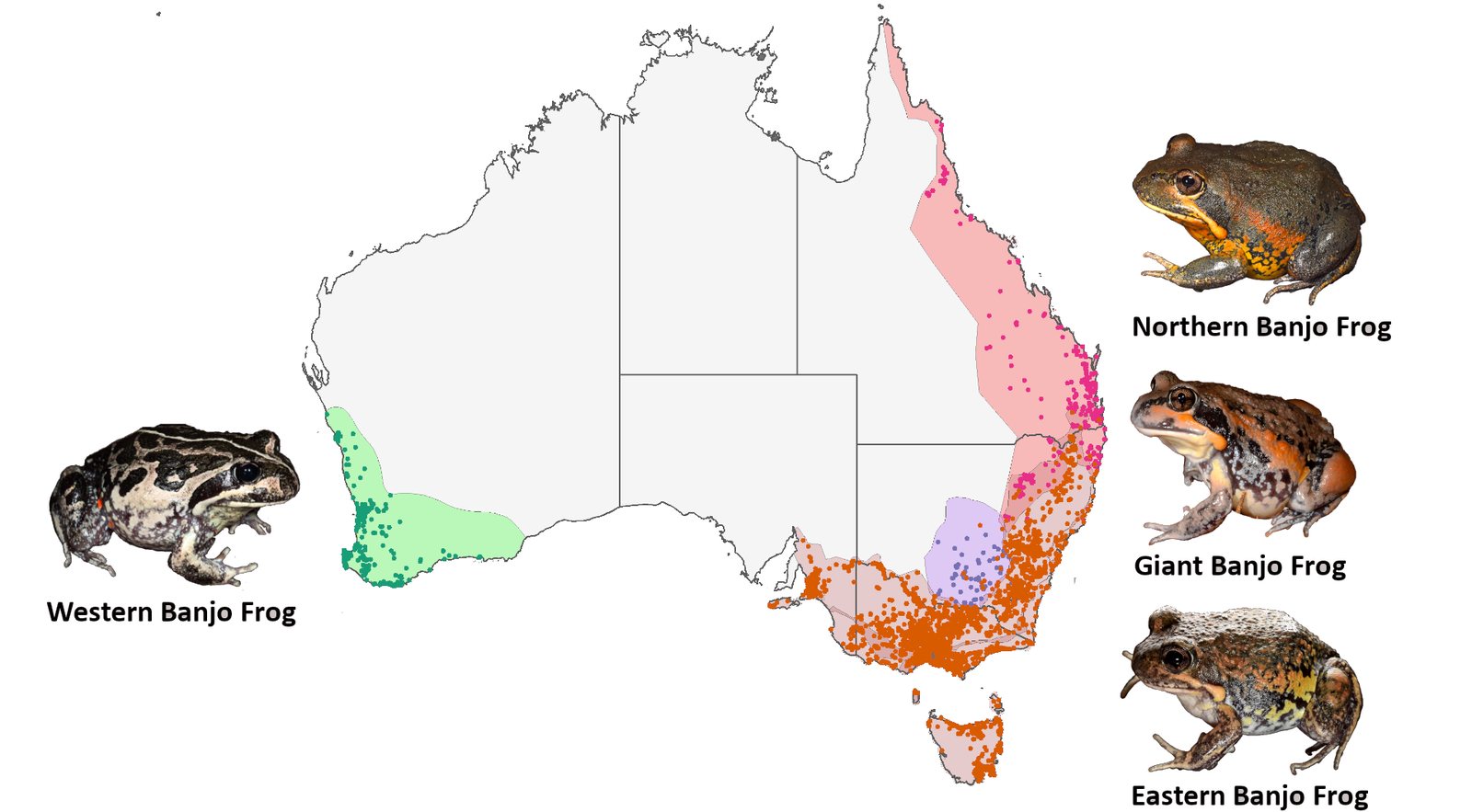Do Pobblebonks sing to suit their surrounds? Calling all citizen scientists to help solve this mystery!
If a frog calls in a forest, would anyone actually hear it? This may sound like a philosophical question, but it is a genuine concern for frogs – like ‘pobblebonks’ – living in forested habitats. Find out how you can help using the FrogID app!
In Australia, the variety of croaks and ribbits you may hear are the “advertisement calls” of male frogs. Frogs are almost solely reliant on advertisement calls for attracting mates and calls are essential in helping females locate male frogs. With female frogs potentially spread far and wide, a male frog needs to produce a sound that will reach the ears of any potential mates.
However, their calls face many potential obstacles along the way. In particular, the physical structure of a frog’s habitat may impact the way in which their call travels and reduce the distance over which they can be heard. In cluttered spaces such as forests, frog calls may echo and become distorted, whereas in open spaces, calls may be lost on the wind…

Using the FrogID app to record frog calls.
Image: Grace Gillard© Grace Gillard
Different sounds are not all impacted equally. Short, high-frequency sounds are those most distorted in forests, while long, low-frequency sounds are easily absorbed and scattered in open spaces. To counteract this, frogs may make subtle changes to the frequency and duration of their calls depending on the structure of their environment, ensuring that their serenade will be sure to catch the attention of a female frog, no matter where they are calling from.
I am investigating whether this theory holds true for an Australian group of frogs. Banjo frogs, or “pobblebonks,” are a group of species found throughout most of eastern Australia - the Eastern Banjo Frog (Limnodynastes dumerilii), Northern Banjo Frog (Limnodynastes terraereginae), Giant Banjo Frog (Limnodynastes interioris), and Western Banjo Frog (Limnodynastes dorsalis). Banjo frogs are habitat generalists, living and calling in a range of different habitats. The distinctive “bonk” of a banjo frog can be heard anywhere from the tropical rainforests of northern Queensland to the chilly climes of Tasmania, and many places in between.

Banjo frogs are widely distributed throughout Australia. Coloured dots represent current FrogID submissions of banjo frogs.
Image: Stephen Mahony and Jodi Rowley© Grace Gillard
To determine whether habitat influences the structure of banjo frog calls, I am analysing recordings submitted by citizen scientists through the FrogID app. FrogID allows users from anywhere across Australia to record frog calls and submit the recordings to the expert validators at the Australian Museum for identification.
To further understand the variation in banjo frog calls across their entire range, I am in need of more recordings from forest habitats, particularly from northern Queensland. So again, I ask: if a frog calls in a forest, would anyone hear it? If you do, please be sure to record the call using the FrogID app!

Eastern Banjo Frog (Limnodynastes dumerilii)
Image: Jodi Rowley© Australian Museum
This spring, please tune your ears to the “bonk” of a banjo frog, and record their calls using the FrogID app!
Grace Gillard, Honours student, Australian Museum Research Institute and UNSW.
Acknowledgements
We would like to thank the many Australian Museum staff and volunteers who make up the FrogID team and, most importantly, the thousands of citizen scientists across Australia who have volunteered their time to record frogs.













